Media | Articles
5 Jeeps that have doubled in value in the last 5 years
Want a better understanding of what’s driving collector car values? Sign up for the Hagerty Insider newsletter.
The collector car market can be unpredictable at times, but even among the storylines that have unfolded over the last few years, some trends aren’t that surprising. For instance, when one specific model or segment begins to take off in value, similar vehicles tend to follow suit. The 4×4 market is no exception.
Notable examples like the Ford Bronco, Chevy Blazer, and Jeep Wagoneer saw prices soar in the last decade, with their pickup brethren not far behind. Buoyed by its iconic off-road status and a die-hard community that proudly sings the brand’s praises while putting its vehicles to good use, Jeep in particular has posted dramatic value increases across its spread of collector models.
After poring over data in Hagerty’s latest price guide, which we updated each quarter, we noticed a trove of Jeeps that have more than doubled in value in just the past five years. Here are five examples.
1976–1983 Jeep J-10
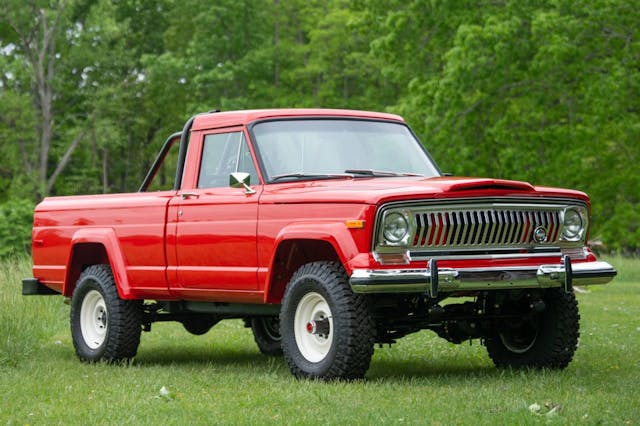
Average five-year price increase: 151 percent
Marketplace
Buy and sell classics with confidence
Just Ford and Chevy pickup values were caught up in the wake of Bronco and Blazer prices, the Jeep J-10 from the late ’70s and early ’80s is riding high on Cherokee and Wagoneer appreciation.
The J-series pickup accompanied the Cherokee and Wagoneer on Jeep’s full-size platform that spanned the ’60s, ’70s, and ’80s. What the J-10 lacks in passenger accommodations it makes up in cargo capacity, and the fact that they’re a much less common sight than their Big Three counterparts might make these Jeeps more appealing collector pieces. Given comparative sparseness of parts, they may be more difficult to restore than their Ford/Chevy/Dodge contemporaries, but the payoff is apparently worth it.
1977–1980 CJ-7 Golden Eagle
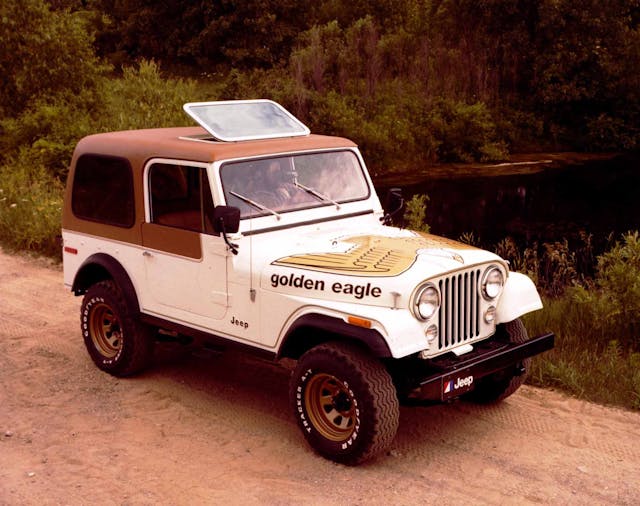
Average five-year price increase: 136 percent
The CJ-7 has a lot to love: It’s elegant, simple, and robust, offering top-down off-roading in a classic package. What could possibly make one of the best 4x4s of the late ’70s even better?
Hood graphics, of course. Along with a giant hood bird and pinstriping, the CJ-7 Golden Eagle package included an AMC 304-cubic-inch V-8 to the compact 4×4 along with gold highlights on the interior. Available in several colors, including Daisy Duke–approved white and tan, the Golden Eagle could even be paired with the Levi’s package for the ultimate late-’70s CJ.
1984–1987 Cherokee Turbodiesel

Average five-year price increase: 155 percent
XJ Jeep Cherokees have been popular with off-roaders for decades. They’re a trim, maneuverable package with solid axles and a choice of transfer cases beneath seating for five and modest storage capacity. The peppy 190-hp 4.0-liter inline-six from the ’90s XJ is perhaps the engine most associated with the model, and though Cherokee values from that era have increased about 130 percent, the 2.1-liter turbodiesel-equipped models from 1984–1987 has them beat, if only in terms of valuation spike.
The indirect-injection four-cylinder used an aluminum block and head and produced a paltry 85 hp and 132 lb-ft of torque. That’s the same torque output as the base 2.5-liter four-cylinder and almost 20 percent less power.
I spent years shopping for an XJ and never once came across an available diesel model, so perhaps its rarity is what’s driving the price increase. Despite the surge, these hard-to-find models still don’t bring the same prices as the late-production XJs from 1997–2001.
1986–1992 Jeep Comanche
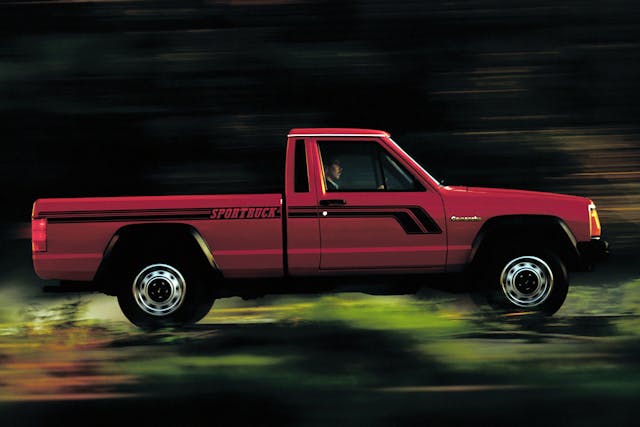
Average five-year price increase: 118 percent
Take just about everything that people love about the XJ Cherokee, including its solid axles, sturdy unibody construction, and durable engines, and throw a bed behind the front seats. That’s a Jeep Comanche.
It was rather unique in the market as most compact 4×4 trucks had moved to independent front-suspension designs by the mid-’80s. Unfortunately, the Comanche was rather short-lived, especially compared to the Cherokee that it was based on. As a result, it never saw the 1997 refresh that introduced an updated interior, one-piece front-side windows, and better door seals.
However, plenty of factory Cherokee and Grand Cherokee parts fit the Comanche, to say nothing of Jeep’s vast aftermarket, so these pickups are a great contender for OEM+ rebuilds and trail vehicles alike.
1997–1999 Jeep Wrangler

Average five-year price increase: 168 percent
The TJ Wrangler marked a dramatic shift in the CJ/Wrangler evolution with the move from leaf to coil springs. The Wrangler got a four-link front suspension with a Dana 30 axle along with a four-link rear suspension and Dana 35 axle, just like a Grand Cherokee.
The massively improved ride and handling made the Wrangler a whole lot easier to live with on the street. Meanwhile, off-road performance benefited from the extra articulation, allowing the nimble Jeep to flex over obstacles while keeping its tires planted.
The Wrangler received a mid-cycle refresh in 2003 that added a host of revisions, including an overdrive automatic transmission, interior update, new four-cylinder engine, and long-wheelbase Unlimited model. The now-legendary Rubicon off-road package also debuted that year with a 4:1 low range, selectable front and rear lockers, and Dana 44 axles front and rear. Those later Wranglers, and especially the Unlimited Rubicon, have been the priciest TJ on the market. Collectors priced out of the most desirable of the TJ offerings seem to be shifting to the older models, causing those prices to creep up as well.
***
Is there a trend to spot among all of these fast-climbing Jeeps? Well, they’re all 4x4s, and all offered real off-road capability. The current market of high-speed, high-power 4×4 pickups and the highly capable Bronco and Wrangler prove that real off-roaders are still popular. While they’re not sports cars or muscle cars, these used 4x4s still represent a vibrant part of the auto enthusiast community and offer the chance for adventure, something that buyers are clearly willing to pay for, new or used.
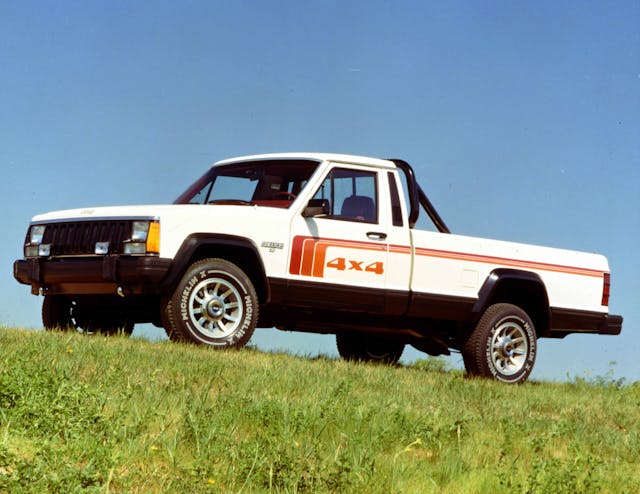











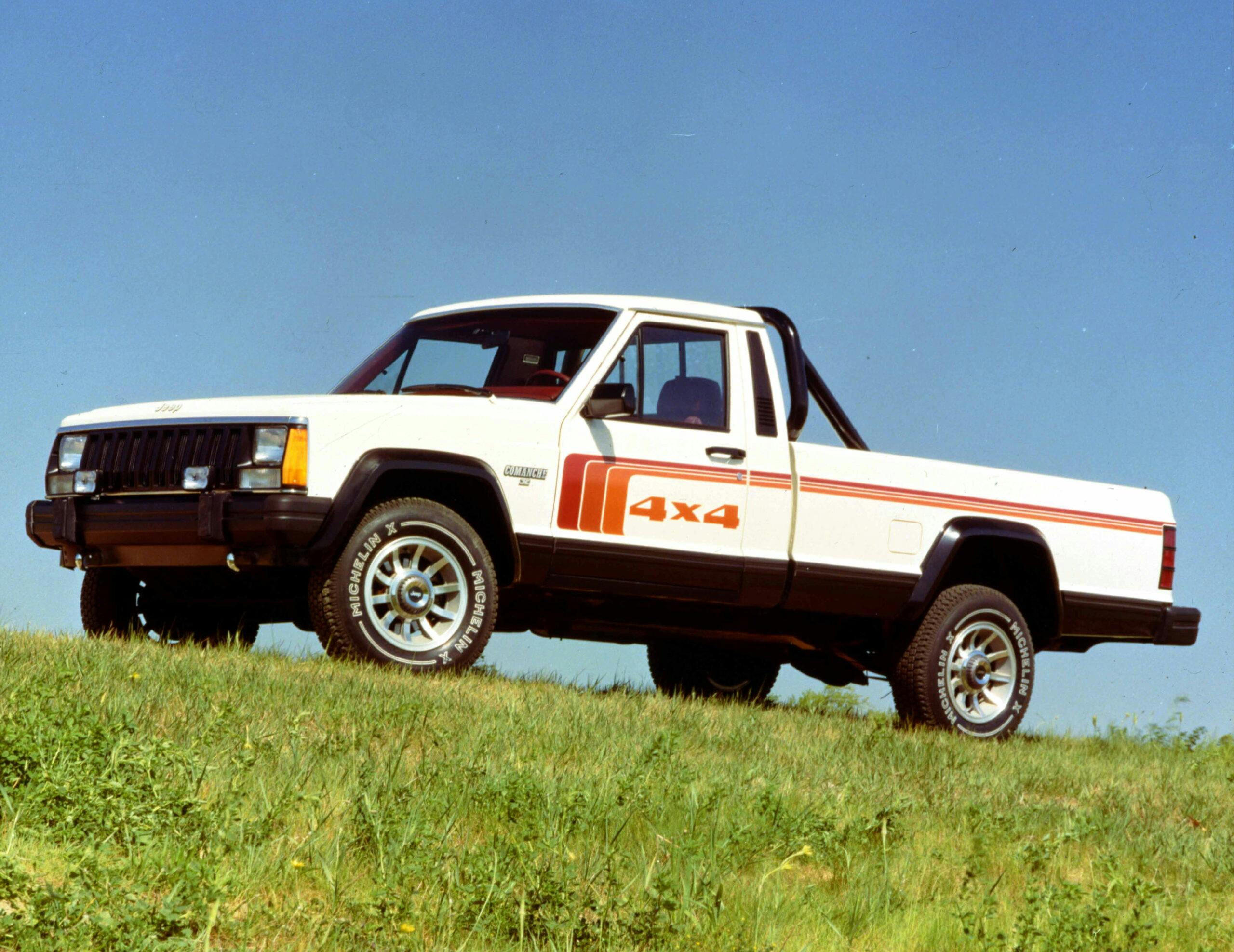
Any idea what a 67 Jeepster going for?
Comanche was pretty fast in the day for 2wd. Test drove one that a buddy was looking at buying new in ’88. So few good J10’s left as rust killed most. That body goes back to the early 60’s with little change. Jeeps were the best prior to Chrysler taking over.
The official word was that slow sales was the reason the MJ (Comanche) was killed off. I wonder how much of was Chrysler deciding the Dakota didn’t need the competition….
I have a.1988 cammanche inherited from my deceased brother David Leslie. the jeep was bought dr. yoshi takei who is also passed away which was my brother, brother in law and mine. Is it worth around four thousand or not. Yoshio gave 8000.00 for it back in somewhere around yr of 2000
“Did any of these surprise you?”
Nowadays nothing surprises me. (1984–1987 Cherokee Turbodiesel, 155% increase, Seriously?)
There was probably only one sold, and that one idiot paid 155% more than the last idiot 15 years ago.
Nailed it
Agreed !
Here is what is going on. These models have not been worth much for a while. Everyone was buying new.
Now the new ones are so expensive and the quality is not good. You can spend less and get a better truck if you can find a rust free one.
I have a 2023 sitting right out side and it is a base Wrangler. Way too much for what you get. Nice turbo 4 though.
Try to find one!
The engine was supplied by Renault, back when that company owned AMC. ( It was also used in the Winnebago Le Sharo.) They didn’t sell in high volume when new, and few survived American driving conditions and maintenance (or, rather, the lack thereof). Compared to the other engine offerings during the early years of the XJ, the turbo-diesel was the performance option at high-altitudes, where the turbocharger largely compensated for the lack of available air. Not until the AMC 4.0 came on line did the XJ have any power. (The 4.0 was the best engine ever put in a Jeep, btw.)
I totally agree.. Had 2 .. a ’91 and 2000..Still have the 2000…Great vehicles!!!
Well percentages are funny……Most of the Turbodiesels were only worth 100.00, so that makes them worth 255.00!
Those are hard to find because most Jeeps rusted away in 10 years or less.
Not true in the west, where old Jeeps are still often seen.
I think I will keep my 1950 M38 (Korean war model jeep). Looks good, runs good, easy to work on and the biggest bonus – my grandkids love it!
👍. Best reason to keep it yet!!
We have a 1952 Jeep/Willys pickup, love it. It is my wish that Hagerty track these older units also. Unlike all of our other vehicles, no price is avail in the Hagerty Price Guide. Thanks for the site
I too have a 55 Willy’s pick up and a 52 wagon. Great classics but I doubt that they will double in the next five years. But that’s not why I collect them. It is because they are a reminder of a simpler day and age!
They don’t track my ’86 XJ-based Wagoneer Limited, either. (Think Cherokee with wood on the sides, four-headlight grill, leather interior and every available option.)
I have a 2004 Jeep Wrangler 2-door Unlimited with only 30,000 miles. I purchased it new in 2004. It’s the stretch version of the Wrangler and a fantastic vehicle. The 4.0L straight six is a beast. This is the best two-door Wrangler ever and this Unlimited series should be on the list for anyone interested in purchasing a Jeep Wrangler.
Yes , It being a “Beast ” puts it right on my radar LOL
I bought my first collector car sixty years ago. The list I’ve owned included four Jeeps, a rough ’42 MB, a ’68 CJ5, an ’89 YJ and now a super clean rust free ’99 TJ Sahara. I’m not into the off-road scene. I just like Jeeps. This one will remain bone stock, a “pavement princess” that my short wife and I can still “wrangle” ourselves into for nice leisurely summer drives. The thought that it might be a good investment is icing on the cake.
My 2000 Jeep Cherokee Sport was bought in 2006 for $7,000 CDN. Mine has a 6 Inline 4.0 L; 6 inch lift; Receivers both fore and aft; Warn 9000 i winch; lug tires; 4 X4; Selec-Trac Transfer case; and still runs like new..only 276,000 km. Now, in 2022, I looked at one in Georgia for sale that went for $29,000….HHHHHMMMMM… In 10 years time, value would be…? Just sayin..
I’ve been predicting for years that the XJ was going to be a major collectible. It’s an icon for the ’80s – ’90s that defined the SUV-segment. That it’s also near bullet-proof only makes it more desirable. But for bean-counters in Stuttgart, it would have remained in production far longer, maybe even up today…!
The age ranges are off on almost all these. Comanche did’t get the 4.0 engine until 87 therefore only an idiot would want an 86. J-10 are rare and command good price if not a rot box up to 88 which was final year. TJ’s were 97 to 06 and all are disireable.
Yeah, but the turbo-diesel would have been available in that first-year Comanche. How much can THAT worth now!
I also would like to put the Jeepster / Commando on the list. Maybe an AMC Eagle and an orphaned sister.
Jeepster with the 225 V6 and Classic Jeep nose. Eagle with the same straight 6 4WD
What about the LJ’s ‘04-07?
Given age, not surprised that these things are going up so much. Popular vehicles with a huge following.
The J10: what Jeep enthusiasts wanted in a new Jeep pickup (even if 2 more doors were added), not the Gladiator that they got.
The Commanche: what Jeep should consider reintroducing to compete with the Maverick and Santa Cruz. Bonus points if they engineer it to utilize some of the plethora of aftermarket parts available for the orignal Cherokee/Commanche platform so it could launch with massive aftermarket support.
I think the new Gladiator is a perfect evolution of the J-10/J-20 (which were originally called Gladiator, then J2000). I don’t understand all the hate for it, and I own an 82 J-20. There’s no way something quite that unrefined would sell (or be allowed for highway use due to all the required safety features) today, and the new Gladiator is still very capable while meeting regs and adding some manners. Still love my J-truck, but it is a rough and unrefined brute and still has all the Kaiser and AMC era Jeep mechanical weirdness that eventually got fixed under Chrysler engineering.
Totally agree on the Comanche, it needs to come back and NOT on some front-drive Stellantis platform. The problem is that no current native Jeep platform is small enough.
I always wanted a 4×4 Comanche but they were hard to find still in good condition by the time I had the cash.